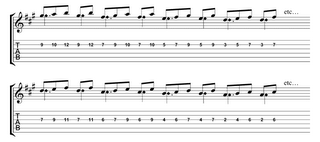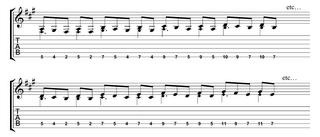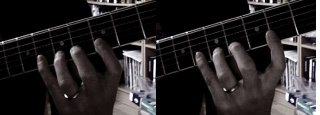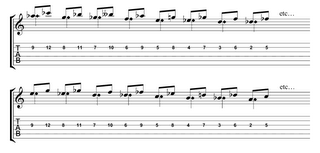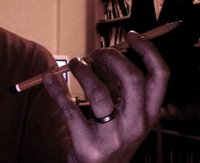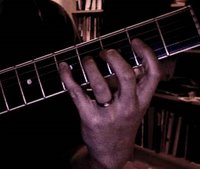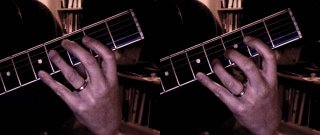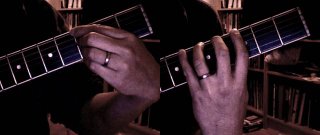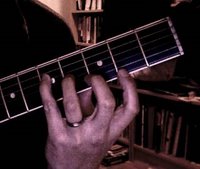I’ve briefly touched on the subject of ‘structure’ (October 11th and October 3rd). In regard to structure imposed from outside, as I said in limits and boundaries: wikiality that
I don’t believe that this particular understanding of ‘structure’ is helpful to the practice of improvisation. Nor do I have much affinity with the desire for this ‘structure.’
We tend to see structure and form as
things—as objects.
Head to your library and look up musical structure or form and you are likely to come away with ideas of a framework around which the musical ‘surface detail’ somehow sits (although why it should generally be that way around, I’ve never understood). ‘Surface detail’ is noise to be filtered out by the analyst out to excavate the
essential; never mind that the details might contain, in the terms of the vernacular, an iconic lick, the hook, swing or shuffle. It’s appropriate that traditional analysis, stemming from West European orthodoxy, should gravitate towards glorifying the inanimate musical skeleton, rather than tendons and muscle, seeing everything else as extraneous fat. This is, after all, a reductive tradition of scholarship and pedagogy with a hegemonic commitment. A tradition that is suspicious of the body, of real-time movement, and of the possibility of creation taking place during performance or reception. Structure and form, in this context, can only be teleological, it cannot exist either retroactively or in real-time. Traditional analysis sees objects; it has difficulty seeing processes.
John Law describes this difficulty. Here’s my paraphrase:
Perhaps it is obvious that the musical is a process? Perhaps it is something that we knew already? It sounds obvious, but I’m not certain about this, for large parts of musicology have found it difficult to handle processes. Perhaps this is a symptom of the desire to cleave to the purity of order and avoid the uncertainties of ordering. For one way of putting the point is to note that musicologists, like many others, tend to prefer to deal in nouns rather than verbs. They slip into assuming that musical structure is an object, like the scaffolding round a building, that will stay in place once it has been erected.
my paraphrase of Law, 1994, p. 14.
John Law was in fact talking about the social. Substitute ‘social’ for ‘musical,’ ‘sociology’ for ‘musicology,’ and ‘sociologists’ for ‘musicologists,’ and you’ve reconstructed the original text. (He is also defining sociologist broadly to encompass all of us who have a stake in how society functions (or not) and, here, I use musicologist in a similarly broad manner. We are, in a sense, all musicologists.)
Let me return to this idea of group improvisation as
society in miniature. Traditional macro-sociology tends to see a top-down, ideology or system driven society. But is this the best way of accounting for social forces? Can we, for example, hold on to this top-down, monolithic ideological drive as being responsible for the recent anti-war demonstrations in which disparate groups including white bourgeois liberals, radical socialists, disenfranchised black activists, left-wing jewish pacifists, secular feminists and conservative muslim groups temporarily and uneasily made an alliance?
Similarly, traditional musicology tends to see a top-down, composition-centered structure. But is this the best description of the musical? Do the assumptions underlying this view point hold up to scrutiny? Are interpreters neutral? Is performance transparent? Are audiences passive? Is the composer the creator? Is structure pre-ordained? Can we hold on to this top-down, monolithic composerly process as being responsible for collective music making practices such as group improvisation (or the relationship between
instrumentalist and instrument)?
Leaving aside, for the moment, whether this form of analysis—looking for the essential structure (object) in a piece of music (another object)—produces valid results, what are the political implications of it? If structure is unified, monolithic, has a single source—the composer or the score—and is located in the discorporate, non-real-time ‘music itself’ (
Cusick, 1999, pp. 480–482, 491–496)—then difference and dissent can only express itself as noise (that should be filtered out by the analyst). Or, more likely, the other way around: West European orthodoxy assumes that dynamic, heterogeneous, interactive social networks
cannot be structured, and thus concludes, I believe erroneously, that the only kind of structure must be unified, fixed, consistent and uni-directional.
We tend to see structure and form as
things—as objects. But there’s another way to understand these words. Instead of seeing them as nouns, we can think of these as verbs; we can think of structur
ing and form
ing.
Thinking about structure as something we do has implications for the idea of group improvisation as society in miniature. Society (and structure) is, as
Bruno Latour argues, “not what holds us together, but what is held together” (
Latour, 1986, p. 276). There are some interesting possibilities in thinking about difference, dissent and resistance in this model (as well as some worrying libertarian implications).
Thinking about this bottom-up impulse in improvisation, this performative structure, it’s interesting to revisit the quote I
started this blog with: “…Avoid the reflex of trying to make it into somthing you think it
ought to be, rather than letting it become what it
can be” (
Frost and Yarrow, 1990, p. 3).
There are racial, colonial, and gender dimensions to the orthodox West European approach to analysis, but that will have to wait for another post….
I may be shot down in flames for this, but… I sometimes wonder if the difference between composerly and performerly notions of structure are analogous to, say, how Creationists and Darwinists view biological organisms and ecosystems. The former observes the commonality and diversity, simplicity and complexity, and sees design, and concludes, well, yes, of course there is a Creator. The latter observes the same commonality and diversity, simplicity and complexity, and finds the results of natural selection. The former posits a top-down, engineered world crammed full of authorial intent, while the latter assumes a bottom-up, performative world teeming with emergence.
references:
Cusick, Suzanne (1999), ‘Gender, Musicology, and Feminism’ in Nicholas Cook and Mark Everist (eds) Rethinking Music (Oxford: Oxford University Press).
Frost, Anthony, and Ralph Yarrow (1990), Improvisation in Drama (London: MacMillan).
Law, John (1994), Organizing Modernity (Oxford: Blackwell).
Latour, Bruno (1986), ‘The Power of associations’ in John Law (ed) Power, Action and Belief: A New Sociology of Knowledge? (London: Routledge).updates:
11–13–06: Patch in Cusick (1999) reference.
11–30–06: Correct editing errors from the last update.
02–05–07: Correct a reference.



